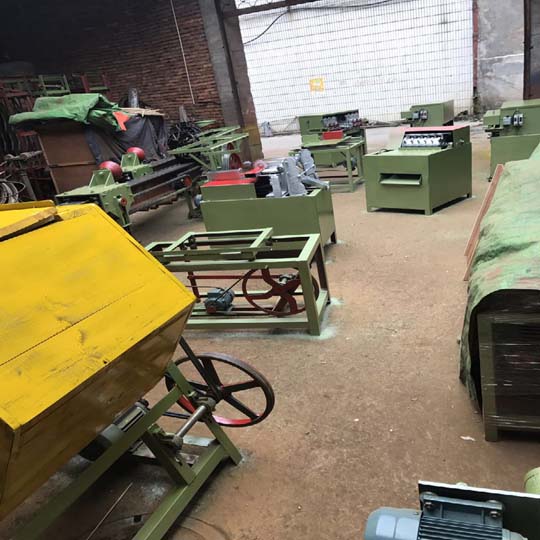The toothpicks we use every day are made through a series of professional toothpicks processing equipment. Common toothpicks on the market are wooden toothpicks, bamboo toothpicks, plastic toothpicks, metal toothpicks, etc. So, what material is the best for making toothpicks?
Why do we use toothpicks?
Food impaction means that food fragments or fibers are difficult to overflow by themselves due to occlusal pressure embedded in the interdental space of adjacent teeth.
Food residues in the teeth are usually broken down into sulfides by bacteria in the mouth. However, the sulfide can cause bad breath, and the impacted spoiled food residues can easily cause local periodontal tissue inflammation and destruction, causing gum shrinkage and dental caries.
In addition, the plaque remaining in the teeth will gradually become hard tartar, which may easily cause gingivitis, etc. It may also cause pain and bleeding. Therefore, in daily life, we must often brush our teeth to maintain oral hygiene. In addition, we need to use toothpicks to help remove food residues between the teeth.

Comparison of common toothpicks
Nowadays, with the advancement of technology, toothpick products of various materials have gradually appeared on the market, mainly divided into wooden toothpicks, bamboo toothpicks, plastic toothpicks and metal toothpicks. Plastic toothpicks are mainly made of some emerging composite materials and food-grade plastics.
Traditional toothpick products include bamboo toothpicks and wooden toothpicks. However, the market share of bamboo toothpicks is much larger than that of wooden toothpicks. This is mainly because bamboo toothpicks have the following irreplaceable advantages: 1. Bamboo has a short growth cycle and fast growth, which is more environmentally friendly than wooden toothpicks. 2. Bamboo toothpicks Its toughness and hardness are much better than wooden toothpicks, which are more brittle and easily broken.
Why not use plastic to make toothpicks?
- Not environmentally friendly
Starch disordering technology has high requirements, high cost of edible plastics, and it is not easy to recycle.
2. High cost
Now there are degradable plastics, and the starch structure is disordered by certain methods to make it thermoplastic. It is also called starch-based plastic. The starch molecule has a polysaccharide molecular structure and contains a large number of hydroxyl groups. Due to the intermolecular and intramolecular hydrogen bonding, the melting temperature is higher, and the decomposition temperature is lower than the melting temperature.
Therefore, during the thermal processing, decomposes without melting. Traditional plastic mechanical processing methods mostly use thermoforming, so to make starch-based whole starch plastics, natural starch must be made thermoplastic. This thermoplasticity can be achieved by changing the internal crystalline structure of starch molecules.
It destroys the intra- and intermolecular hydrogen bonds and disrupts the double helix crystal structure of starch molecules, which will lower the melting temperature of starch and make it thermoplastic. However, the unit price of starch for the production of degradable plastics is very high, and energy consumption is also large.
